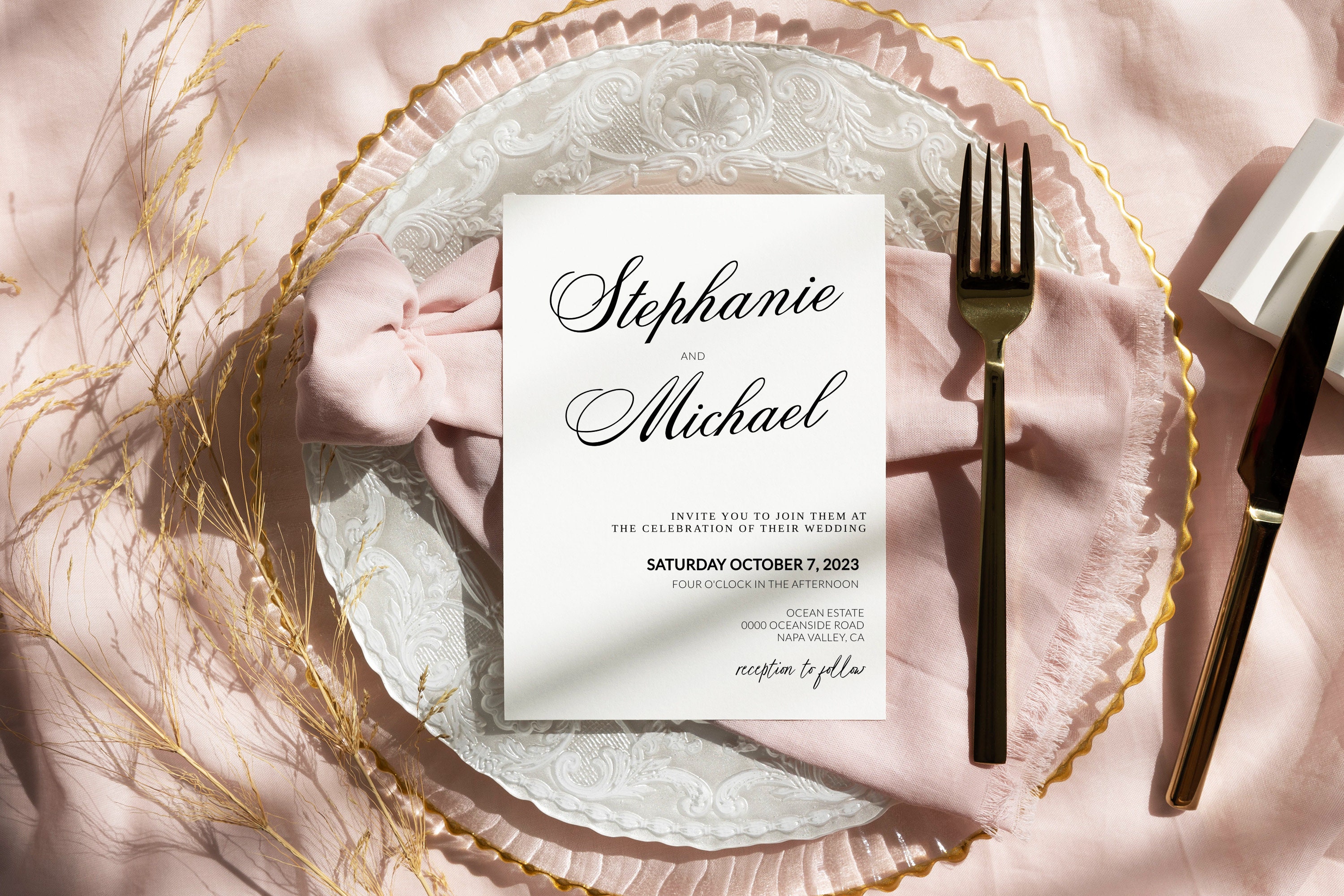Wedding Invitations Through Time: From Hand-Delivered Scrolls to Digit…
페이지 정보
작성자 Lakesha 작성일23-12-13 20:49관련링크
본문
Wedding invitations have consistently held a central role in proclaiming the union of two souls. Their evolution reflects the shifting societal norms, artistic sensibilities, and technological progressions.
In bygone eras, prior to the emergence of printed paper, weddings were proclaimed through artfully made scrolls. These scrolls, often crafted from parchment or vellum, were given in person by couriers, symbolizing the gravity of the occasion.
The Renaissance period ushered in significant changes in wedding stationery. The emergence of the printing press and the renewed interest in art and literature dictated the design and content of wedding invites. Intricate illustrations, alongside elegant calligraphy, were commonly seen.
As the years rolled on, the Victorian era witnessed another shift in nuptial announcements. With a strong focus on decorum, invitations of this era boasted ornate designs and ceremonial language. The advent of relief printing techniques further enhanced the grandeur of these cards.
The 20th century ushered a movement of customization. The camera's invention allowed couples to include their images into the invitations, turning them more intimate. This era also experienced the boom of DIY invitations, with numerous couples opting to create their own unique designs.
The dawn of the 21st century, defined by the digital revolution, revolutionized wedding stationery once again. With the rise of online platforms, e-vites became a preferred choice. These digital invitations, giving ease, permit couples to send out invites immediately. Additionally, they provide features like RSVP tracking, built-in maps, and interactive elements.
To wrap up, the journey of wedding invitations, from personalized handwritten scrolls to contemporary digital e-vites, is a mirror of the way in which traditions and technologies intertwine. Irrespective of the medium, the central sentiment remains the same: commemorating love and togetherness.
If you have any concerns concerning where and exactly how to use Bridesmaid Info Card, you can call us at the website.
In bygone eras, prior to the emergence of printed paper, weddings were proclaimed through artfully made scrolls. These scrolls, often crafted from parchment or vellum, were given in person by couriers, symbolizing the gravity of the occasion.
The Renaissance period ushered in significant changes in wedding stationery. The emergence of the printing press and the renewed interest in art and literature dictated the design and content of wedding invites. Intricate illustrations, alongside elegant calligraphy, were commonly seen.
As the years rolled on, the Victorian era witnessed another shift in nuptial announcements. With a strong focus on decorum, invitations of this era boasted ornate designs and ceremonial language. The advent of relief printing techniques further enhanced the grandeur of these cards.
The 20th century ushered a movement of customization. The camera's invention allowed couples to include their images into the invitations, turning them more intimate. This era also experienced the boom of DIY invitations, with numerous couples opting to create their own unique designs.
The dawn of the 21st century, defined by the digital revolution, revolutionized wedding stationery once again. With the rise of online platforms, e-vites became a preferred choice. These digital invitations, giving ease, permit couples to send out invites immediately. Additionally, they provide features like RSVP tracking, built-in maps, and interactive elements.
To wrap up, the journey of wedding invitations, from personalized handwritten scrolls to contemporary digital e-vites, is a mirror of the way in which traditions and technologies intertwine. Irrespective of the medium, the central sentiment remains the same: commemorating love and togetherness.
If you have any concerns concerning where and exactly how to use Bridesmaid Info Card, you can call us at the website.


 > 고객센터 > 입금자 확인
> 고객센터 > 입금자 확인